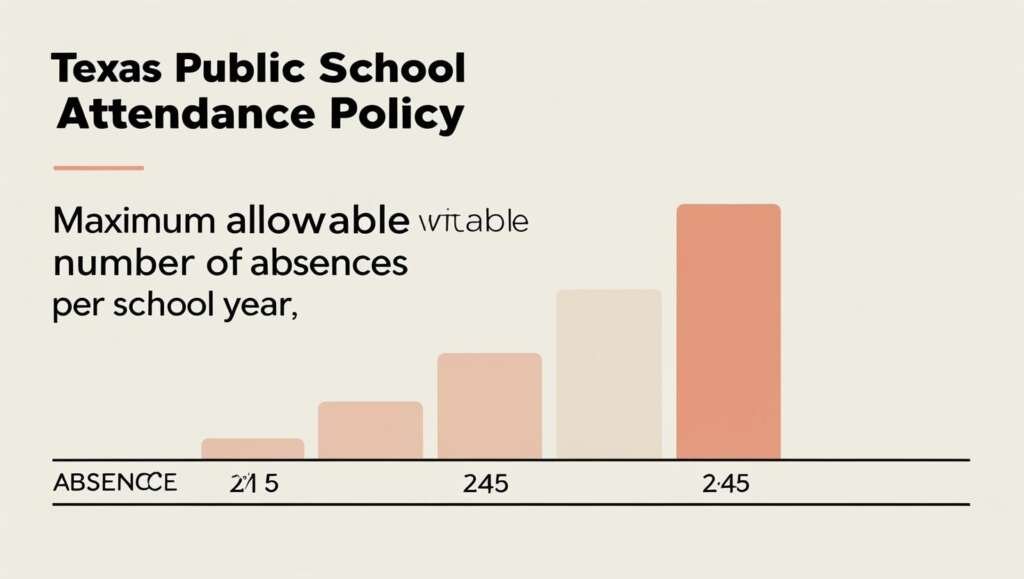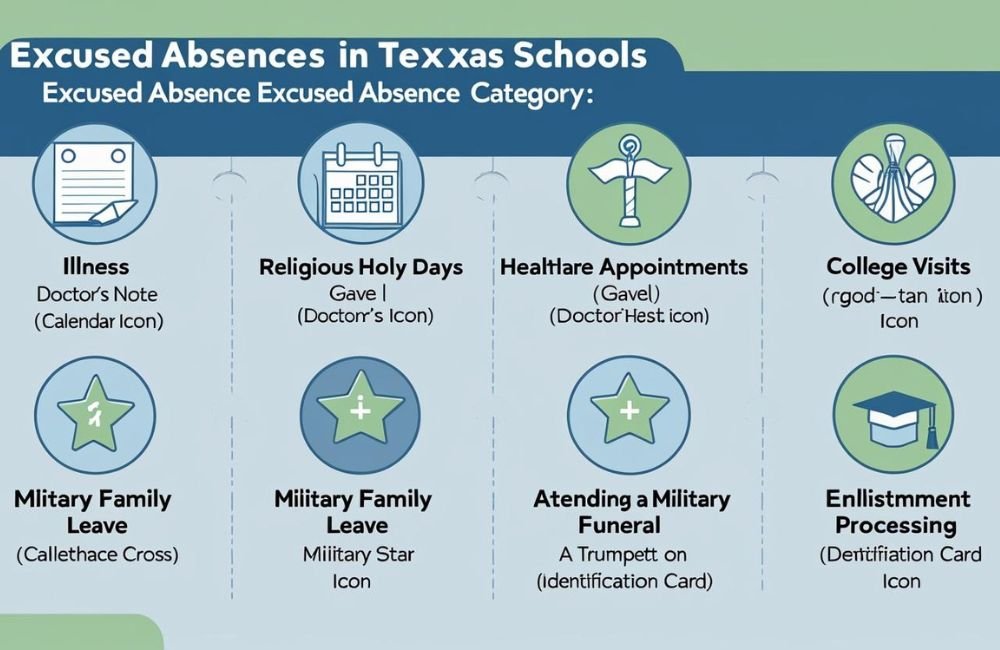If you are a parent in Texas, you might wonder how many days your child can miss school before it becomes a problem. Maybe your child is sick, your family has an event, or you just need a day off from the school routine. In Texas, there isn’t one simple number for “allowed” absences. The rules come from state laws, school district policies, and something called the 90% attendance rule. Even excused absences can sometimes affect your child’s grades or credit. In this guide, we will explain the rules in clear language so you know how many days your child can miss, what counts as excused, what happens with too many absences, and how to avoid problems with school attendance.
How Many Days Can a Student Miss School in Texas Without Getting in Trouble?

If you’ve ever had to keep your child home for a fever, a family trip, or just a much-needed mental health day, you’ve probably wonderedhow many absences are too many in Texas?Here’s the thing: Texas doesn’t set one magic “absence number” that applies to every situation. Instead, the rules come from a mix of state laws, district policies, and attendance-for-credit requirements.
In simple terms:
- Unexcused absences have strict legal limits before truancy action kicks in.
- Total absenceseven excusedcan still cause your child to lose course credit if they miss more than 10% of the school year.
So, depending on the type of absence and your district’s rules, your child could be at risk well before they hit what you think is “too many” days off.
What Does Texas Law Actually Say About School Attendance?
Texas has something called the Compulsory Georgia Attendance Law. This law says that kids between ages 6 and 19 have to attend school every instructional day unless there’s a legal exemption.
Key points straight from the law (Texas Education Code 25.085–25.087):
- Missing school without an approved excuse is a violation.
- Parents are legally responsible for making sure their kids attend.
- Certain absences are allowed (we’ll get into those in a bit).
If a student racks up 3 unexcused absences in a 4-week period or 10 in a 6-month period, the school has to take action starting with truancy prevention measures and possibly ending in a court referral.
How Does the 90% Attendance Rule Work in Texas Schools?
This rule trips up a lot of parents. The 90% attendance rule says a student must be present for at least 90% of the days a class is offered to get credit or a final grade in that class.
Here’s what that means in real numbers:
- Most Texas schools have about 180 instructional days in a year.
- 10% of that is 18 days.
- Miss more than 18 days (excused or unexcused), and your child could lose crediteven if they have passing grades.
It’s important to understand:
Excused absences may keep you out of legal trouble, but they don’t automatically protect your child’s course credit.
The good news? Many districts have attendance committees that can approve makeup work or alternative assignments so your child doesn’t lose credit. But you have to request it, and documentation is key.
When Does Missing Too Many Days Count as Chronic Absenteeism?
You might hear your school talk about “chronic absenteeism.” This is a national education term, not just a Texas thing. A student is considered chronically absent if they miss 10% or more of the school yearthat’s about 18 days in a standard calendarno matter whether the absences are excused or not.
Why schools care:
- Chronic absenteeism is strongly linked to lower grades, lower test scores, and higher dropout risk.
- Even missing 2 days a month adds up quickly.
So yes18 days sounds like a lot, but between flu season, family emergencies, and other life events, it can sneak up fast.
How Many Unexcused Absences Lead to Truancy in Texas?
Here’s the hard line Texas draws for unexcused absences:
- 3 in 4 weeks – The school starts intervention steps.
- 10 in 6 months – The school must consider legal action.
At the 3-day mark, you may get a warning letter or a call. By 10 unexcused absences, your child could be referred to a truancy court, and you as the parent might face fines or required parenting classes. The type of absence matters a lotbecause an excused absence won’t count toward truancy, but an unexcused one will.
Which Absences Count as Excused in Texas?

The Texas Education Code lists specific reasons that are considered excused. Some might surprise you.
Excused Absences Include:
- Illness (with a parent or doctor note; long-term illness needs a doctor’s certification)
- Religious holy days
- Required court appearances
- Healthcare appointments (if the student attends school part of the day)
- College visits (up to 2 days for juniors and seniors)
- Military family leave (up to 5 days for certain situations)
- Sounding “Taps” at a military funeral
- Enlistment processing (up to 4 days for students 17+)
Every one of these still requires documentationand sometimes, same-day or next-day return to school.
What Unique Attendance Rules Should Texas Parents Know About?
Not necessarily. Schools can refuse to excuse an absence even if you send a noteespecially if the absence doesn’t match the allowed reasons in the law.
If your child has a serious illness or surgery recovery, the school can approve a homebound program. This way, absences won’t affect credit or cause truancy issuesbut you’ll need formal medical documentation.
It depends. Many districts use truancy prevention measures before filing in court like parent conferences, attendance contracts, or counseling referrals.
How Can Parents Help Their Kids Stay Within Attendance Limits?
- Track days missed – Use your school’s attendance portal.
- Send notes right away – Late notes can cause absences to remain unexcused.
- Schedule appointments smartly – Try for early morning or late afternoon so your child attends part of the day.
- Plan travel around school breaks – Family vacations during school days are almost always unexcused.
- Ask for help early – If attendance is slipping, involve your school counselor.


